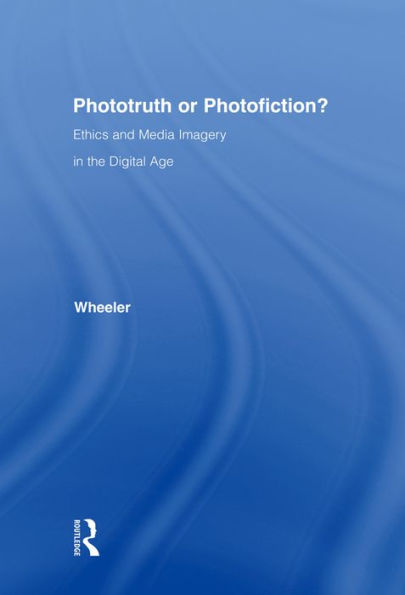This text examines the use of images in journalistic contexts and the manipulation of these images to accomplish varying objectives. It provides a framework for critical discussion among professionals, educators, students, and concerned consumers of newspapers, magazines, online journals, and other nonfiction media. It also offers a method of assessing the ethics of mass-media photos, which will help visual journalists to embrace new technologies while preserving their credibility.
Phototruth or Photofiction? also:
*recounts the invention of photography and how it came to be accorded an extraordinary degree of trust;
*details how photos were staged, painted, composited and otherwise faked, long before digital technology;
*lists contemporary image-altering products and practices;
*details many examples of manipulated images in nonfiction media and lists rationales offered in defense of them;
*explains how current ethical principles have been derived;
*lays groundwork for an ethical protocol by explaining conventions of taking, processing, and publishing journalistic photos; and
*offers tests for assessing the appropriateness of altered images in non-fiction media.
Each chapter is followed by "Explorations" designed to facilitate classroom discussion and to integrate into those interactions the students' own perceptions and experiences. The book is intended for students and others interested in the manipulation of images.
This text examines the use of images in journalistic contexts and the manipulation of these images to accomplish varying objectives. It provides a framework for critical discussion among professionals, educators, students, and concerned consumers of newspapers, magazines, online journals, and other nonfiction media. It also offers a method of assessing the ethics of mass-media photos, which will help visual journalists to embrace new technologies while preserving their credibility.
Phototruth or Photofiction? also:
*recounts the invention of photography and how it came to be accorded an extraordinary degree of trust;
*details how photos were staged, painted, composited and otherwise faked, long before digital technology;
*lists contemporary image-altering products and practices;
*details many examples of manipulated images in nonfiction media and lists rationales offered in defense of them;
*explains how current ethical principles have been derived;
*lays groundwork for an ethical protocol by explaining conventions of taking, processing, and publishing journalistic photos; and
*offers tests for assessing the appropriateness of altered images in non-fiction media.
Each chapter is followed by "Explorations" designed to facilitate classroom discussion and to integrate into those interactions the students' own perceptions and experiences. The book is intended for students and others interested in the manipulation of images.

Phototruth Or Photofiction?: Ethics and Media Imagery in the Digital Age
244
Phototruth Or Photofiction?: Ethics and Media Imagery in the Digital Age
244Related collections and offers

Product Details
| ISBN-13: | 9781135633301 |
|---|---|
| Publisher: | Taylor & Francis |
| Publication date: | 05/18/2005 |
| Sold by: | Barnes & Noble |
| Format: | eBook |
| Pages: | 244 |
| File size: | 22 MB |
| Note: | This product may take a few minutes to download. |
